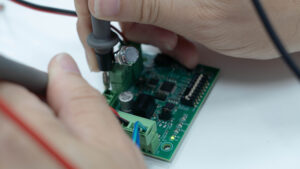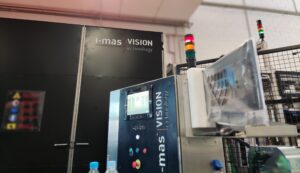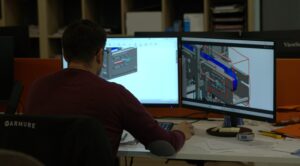Digital transformation has revolutionized the way logistics operations are managed around the world. Among the most disruptive technologies is machine vision, a tool that enables machines to interpret their visual environment with increasing accuracy.
Applied to logistics and the supply chain, this technology not only improves operational efficiency, but redefines the way products are tracked, transported and managed throughout their entire journey. From automated warehouses to intelligent vehicles, machine vision is making its mark on the industry.
Automation of warehouses and distribution centers
One of the most widespread applications of machine vision in logistics is warehouse automation. Thanks to intelligent camera systems combined with image processing algorithms, it is possible to identify products, read barcodes, verify labels and steer autonomous vehicles (AGVs) within the facility. This makes it possible to reduce human error in picking and sorting goods, increase the speed of order processing and optimize the use of space by detecting in real time the volume and location of products.
Companies such as Amazon or Alibaba already apply these systems in fully automated logistics centers, where robots are guided by cameras and sensors to handle thousands of products per day without direct human intervention.
Quality control and traceability using machine vision systems
In the supply chain, ensuring that products arrive in perfect condition is essential. Machine vision systems enable automatic inspections that detect defects in real time, whether in packaging, labeling or in the product itself. In addition, it facilitates traceability through advanced reading of QR codes, RFID and OCR (optical character recognition) systems, even in conditions of low visibility or with deteriorated labels.
Thanks to these capabilities, companies can reduce returns and complaints, improve customer satisfaction and have automatic digital records that simplify audits and subsequent analysis.
Improved inventory control and demand forecasting
Another outstanding advantage is intelligent inventory control. Artificial vision cameras can perform automatic stock counts, identify misplaced or expired products, and generate alerts for automatic replenishment. This information, integrated with enterprise resource planning (ERP) systems, enables more agile and accurate decisions to be made.
In addition, by analyzing product movement and turnover patterns, machine vision can feed predictive algorithms that help anticipate demand. This avoids both excess inventory and stock-outs, two problems that directly affect the profitability of any logistics operation.
Safety and efficiency in transportation
During transportation, machine vision is applied on multiple fronts. For example, it makes it possible to check the condition of vehicles before departure (by detecting damage or leaks), to control loading and unloading with millimeter precision, and to improve traffic safety thanks to camera-based driver assistance systems.
At loading docks, this technology also helps to automatically validate the arrival and departure of goods, register license plates and monitor compliance with regulations. All this reduces waiting times, improves traceability and reduces the risk of loss or fraud.
In short, machine vision has become a key component of modern logistics. By automating processes, improving quality control and providing complete visibility of operations, this technology not only increases operational efficiency, but also offers a competitive advantage in an increasingly demanding environment.
The evolution of artificial intelligence and the cost reduction of sensors and cameras make these solutions more accessible to companies of all sizes. Those that know how to adopt them strategically will be better prepared to meet the supply chain challenges of the future.
In the engineering department of i-mas we are specialized in the combination of artificial vision technologies, deep learning and industrial automation in production processes, which allows us to offer integral solutions adapted to the specific needs of each client.
Want to learn more about our services? Contact us or visit our projects section!



